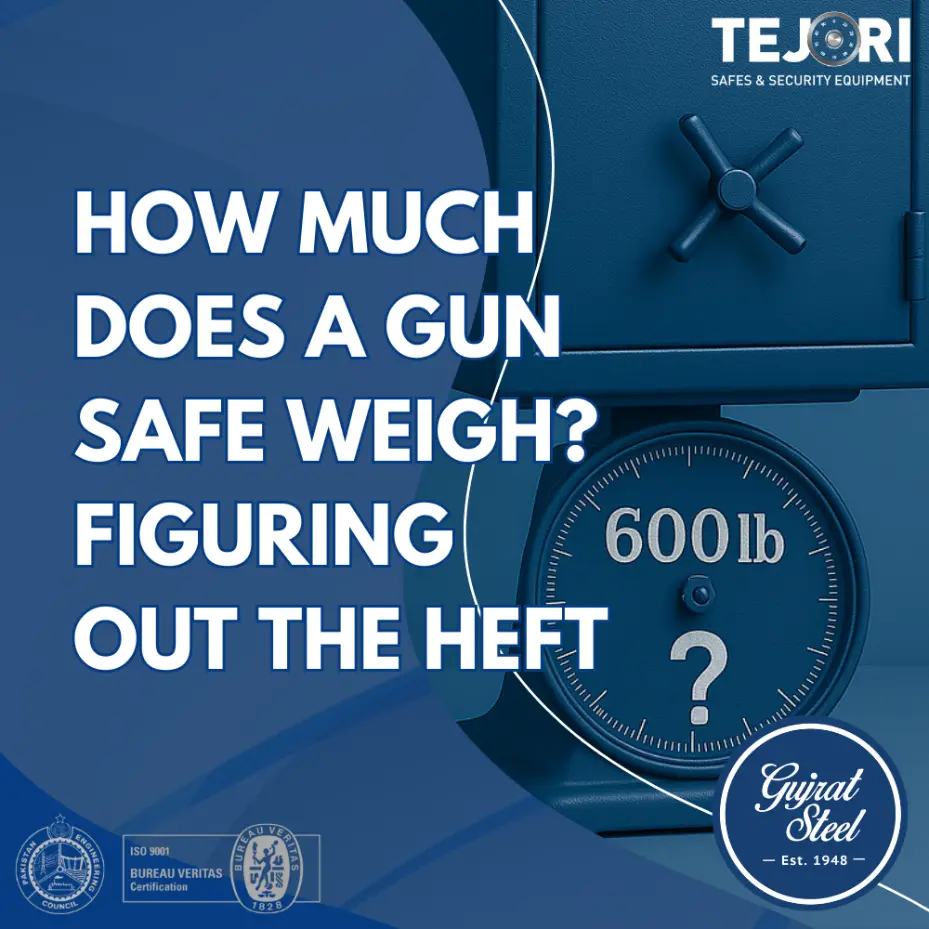Gun safes can weigh anything from less than a briefcase to more than a small car. It really depends on the safe’s size, how thick the steel is, and if it’s built to resist fire.
Key Takeaways
- No Single Weight: Forget one number; weights are all over the place.
- Size is King: Bigger safe = way more weight. Simple as that.
- Thick Steel Adds Up: Better security means thicker steel (lower gauge number), which means heavier.
- Fireproofing = Extra Pounds: Those fire-resistant layers pack on significant weight.
- Weight Matters Practically: Think delivery, where it goes (floor strength!), moving it later, and stopping thieves from just walking off with it.
Table of Contents
Introduction
Thinking about getting a gun safe? Or maybe you’ve got one sitting there and need to move it? One big question pops up fast: “How heavy is this beast?” Knowing the weight is super important. It tells you if you can even get it into your house, where you can safely put it, and honestly, how hard it’ll be for someone else to try and move it. Unlike asking how much a fridge weighs (they’re usually in a certain range), gun safe weights are all over the map. There’s no one-size-fits-all answer. Let’s try and unpack what makes ’em heavy and what kind of numbers you might be looking at.
Why Are Some Safes So Much Heavier Than Others?
It’s not random. Several things pile on the pounds. Knowing these helps you understand why safes weigh what they do.
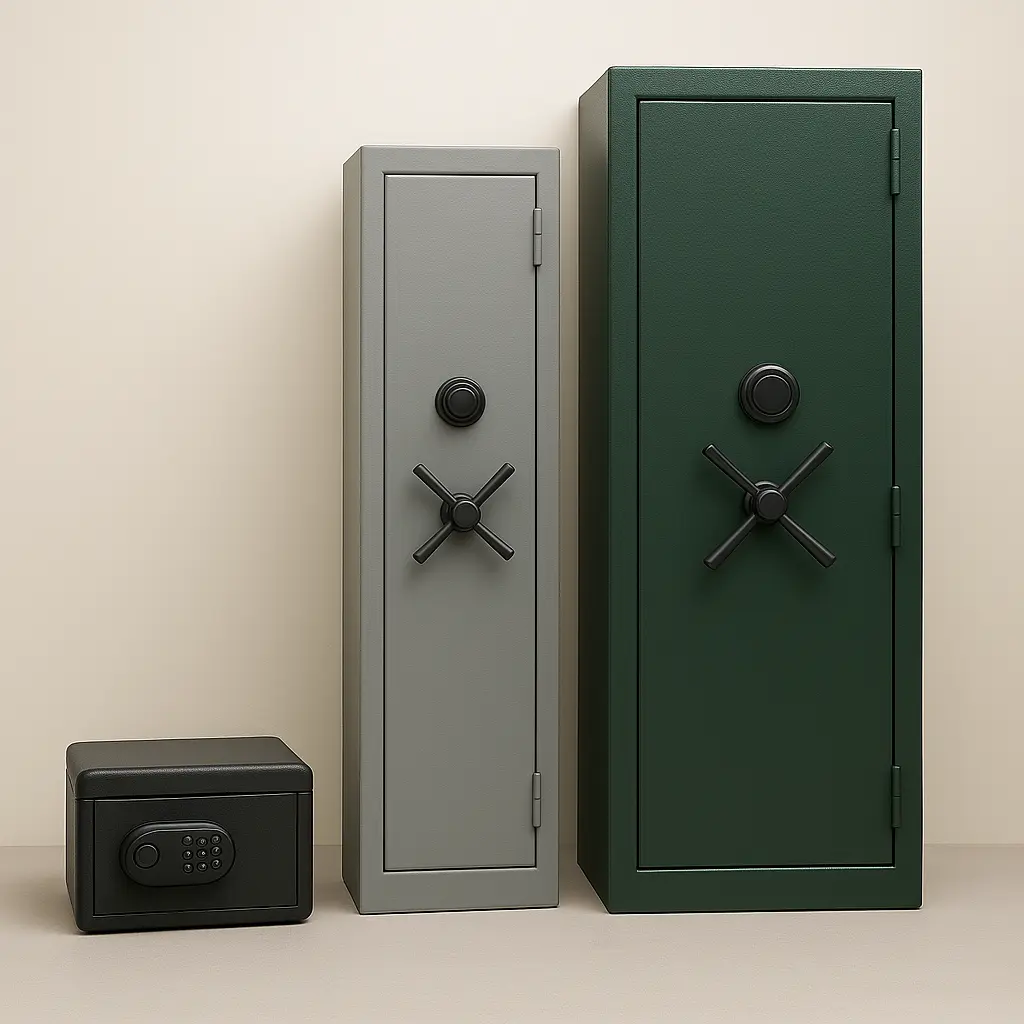
Size – The Biggest Factor
This one’s pretty obvious, right? A little box for one handgun isn’t going to weigh the same as a giant vault that holds 50 rifles. Bigger safes just need more stuff to build them – more steel, more fireboard, bigger door. So, yeah, the physical dimensions (how tall, wide, deep) are your first big clue to the weight.
Steel Thickness – Security vs. Weight
How thick is the metal? This is huge for security, but man, it adds weight fast. They measure steel in gauge. Here’s the tricky part: the smaller the gauge number, the thicker (and heavier!) the steel.

- So, 12-gauge steel? Thicker and heavier than 14-gauge.
- 10-gauge? Even thicker and heavier. Top-notch security safes might use 10-gauge, 7-gauge, or even beefier steel. That makes them tough to break into, but also turns them into anchors.
- Cheaper safes often use thinner steel (like 14 or 16 gauge) to keep the price and the weight down.
Fire Protection – Layers Add Up
Lots of safes are built to survive a fire for a certain amount of time at a certain temperature (like, say, 60 minutes at 1200°F). How do they do that? Layers of special fire-resistant stuff inside the walls and door. Usually, it’s like really dense drywall (gypsum board) or sometimes a poured concrete-like mix.
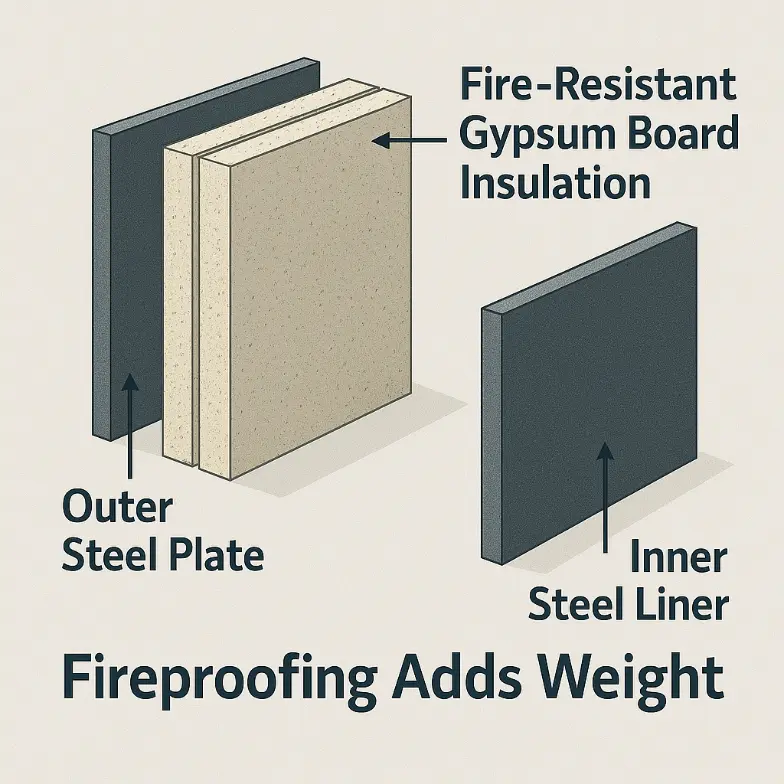
Want a longer fire rating (like 90 minutes instead of 30)? You need thicker or more layers of that insulation. That means more weight. A lot more.
The Door – Often the Heaviest Part
Think about the door. It usually has thick steel (maybe even thicker than the walls), all that fireproofing material, plus the heavy lock mechanism, big locking bolts sticking out, and maybe extra steel plates inside to stop drills. A big, beefy door with lots of bolts means a heavy safe.
The Lock Itself
Okay, this isn’t a huge weight factor compared to steel and fireboard, but the lock mechanism adds something. A complex old-school dial lock might weigh a tad more than a simple electronic keypad, but it’s usually not a major difference.
What’s Inside?
Shelves, gun racks, drawers – they add a bit of weight too. Not as much as the main structure, usually. But a safe loaded with heavy-duty adjustable steel shelves will weigh more than one with basic fabric-covered wood racks.
Ballpark Weights: What to Expect (Roughly!)
Okay, let’s try to put some numbers out there. But seriously, these are just general ideas. Safes vary wildly. Always look up the weight for the exact model you’re interested in. Don’t guess based on these ranges alone!
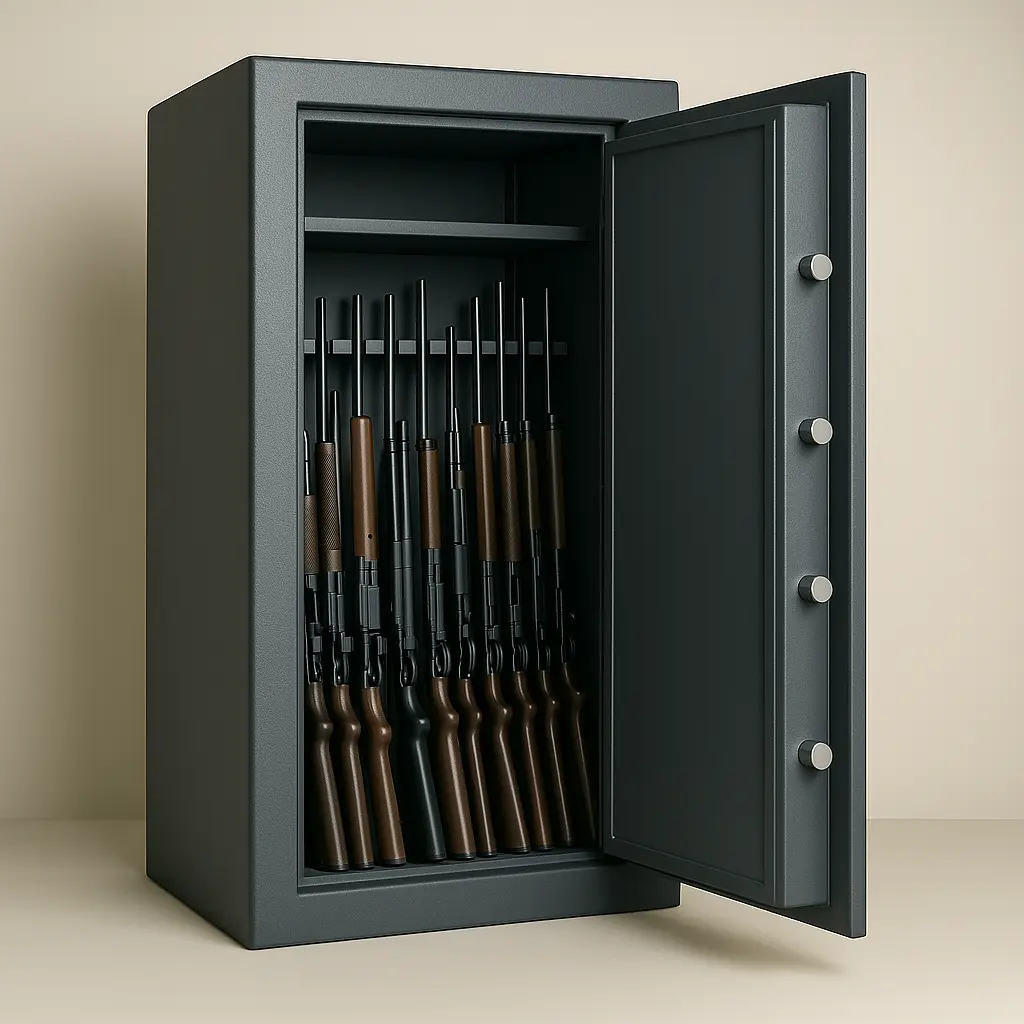
- Little Handgun Boxes / Quick-Access Safes:
- Usually thin metal, maybe no fire rating. Just for keeping a pistol handy but secure.
- Weight? Think 10 maybe up to 50 pounds (around 5-23 kg). Light enough to carry easily.
- Smaller Rifle Safes (Entry Level):
- Maybe holds 8-14 rifles. Often thinner steel (14-gauge maybe), basic fire rating (30 mins perhaps).
- Weight? Now we’re talking maybe 200 to 450 pounds (about 90-205 kg). Getting heavier.
- Mid-Size Rifle Safes:
- Fits more guns (15-30 maybe). Often steps up the steel (12-gauge?) and fire protection (45-60 mins?).
- Weight? Could be anywhere from 450 up to 800 pounds (roughly 205-365 kg). Needs serious thought before moving.
- Big Rifle Safes:
- Room for lots of guns (30-50+). Usually thicker steel (10 or 12-gauge), good fire rating (60-90 mins or more), heavy door.
- Weight? Easily 800 pounds and up. 1000, 1200, 1500 pounds or more isn’t uncommon (365 kg to 680 kg+). These are serious pieces of furniture.
- Huge / High-Security Safes:
- Massive capacity, super thick steel (7-gauge or even way thicker), long fire ratings (hours!). Commercial grade stuff sometimes.
- Weight? Starting around 1500 pounds and going way, way up. Easily into the thousands of pounds, even tons for custom vaults (680 kg to well over 1360 kg).
- Point is: You can see the huge jumps. A “big” safe from Brand X might weigh less than a “medium” safe from Brand Y if Brand Y uses way thicker steel. Check the specs!
Why Does the Weight Even Matter?
Knowing how heavy it is tells you a lot about dealing with it:
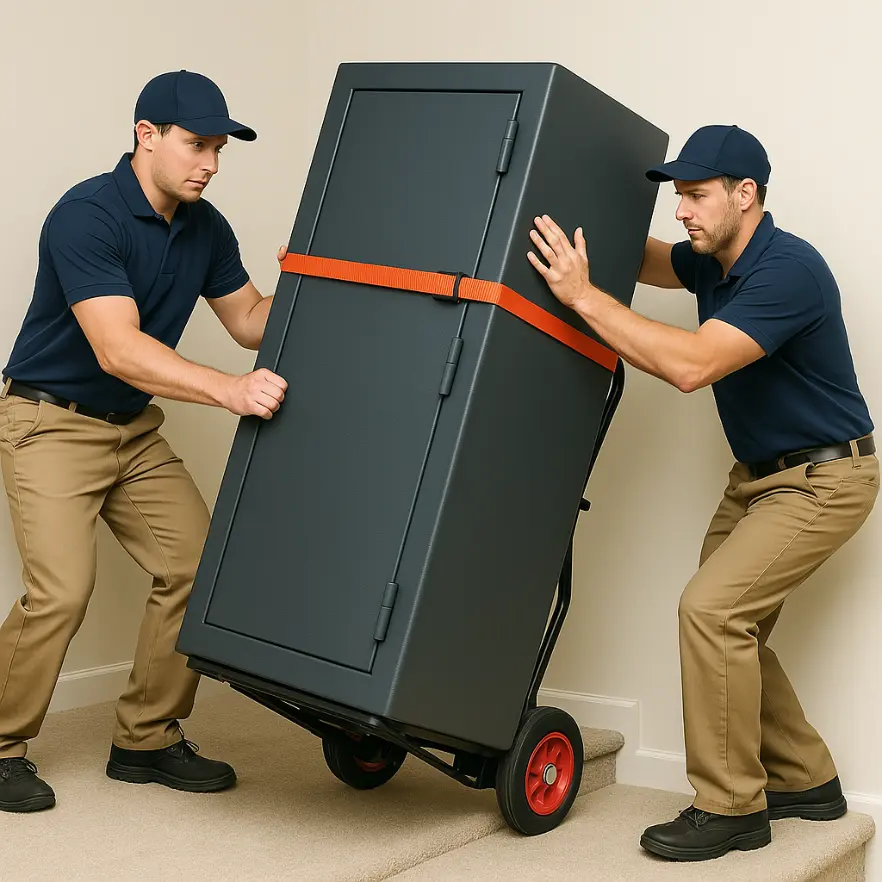
Getting it Delivered & Moved
- DIY Moving? Forget it for anything over maybe 200-300 pounds unless you really know what you’re doing and have the right gear (heavy-duty dolly, straps, ramps, strong friends). Safes over 500 lbs? Professionals are almost always needed. It’s just too risky otherwise – for you, your house, and the safe.
- Delivery Costs: Heavier safe = more money to deliver. Especially if they have to bring it inside, up stairs (“white glove delivery”). If they just drop it at your curb, you figure out how to get the beast inside.
Where Can You Put It? (Floor Strength)
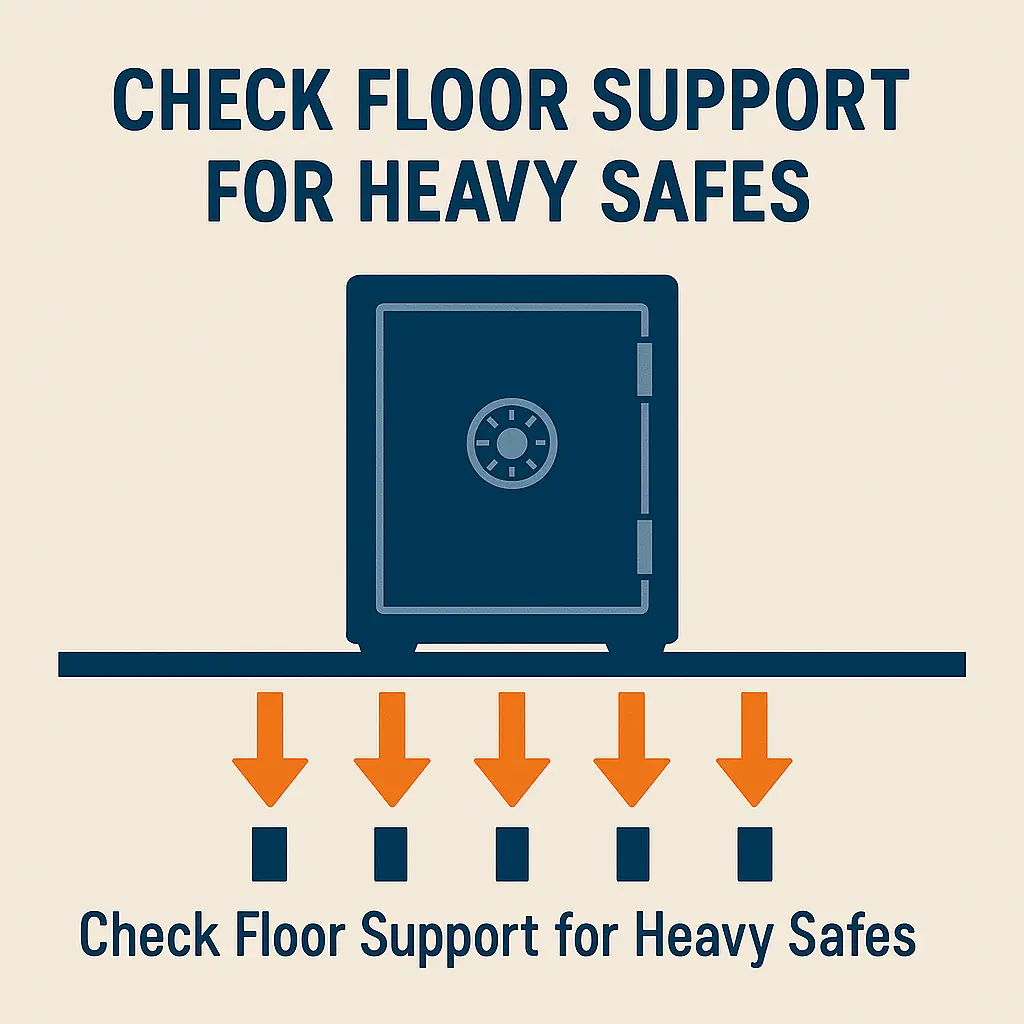
- Heavy Load Alert: Really heavy safes (think 1000 lbs+) make you wonder about your floor. Can it handle that much weight concentrated in one spot? Especially on upper floors or over crawl spaces. You might need to check your floor load capacity. For super heavy ones, talking to a structural engineer isn’t a crazy idea.
- Keeping it Steady: Heavy safes don’t tip easily, but you still want them level. Most have holes so you can bolt them to the floor, which is good for stability and makes them even harder to steal.
Security – Weight as a Deterrent
- Hard to Carry Off: This is a big plus of a heavy safe. Thieves might break into a house, but stealing a 1000-pound safe? That takes serious time, tools, and muscle. It makes them much more likely to just leave it alone.
- Weight Isn’t Everything: But remember, just because it’s heavy doesn’t mean it’s impossible to break into right there in your house. If thieves have time and tools, the quality of the steel, the door, the lock – that’s what stops them from prying or drilling it open. Weight stops them taking it with them.
Finding the Exact Weight
Don’t just guess based on size. Here’s how to find the real number:
- Manufacturer’s Website: Best place. Find the model number, look at the product details or spec sheet. Weight should be listed.
- Retailer’s Site: Good online stores usually list detailed specs, including weight.
- Check the Manual: If you have the safe already, find the model number (sticker maybe?) and look up the manual online.
- Ask Them: Can’t find it? Call or email the company that made it or sold it. Give them the model number.
Moving a Heavy Safe? Be Smart, Be Safe!
Seriously, these things can hurt you or wreck your house if you’re not careful.
- Don’t Go It Alone: If it feels heavy, get help. Enough help.
- Right Tools: Heavy-duty dolly, straps, maybe ramps, stair climbers for stairs. Rent them if you need to.
- Plan the Path: Clear everything out of the way. Protect floors and doorways. Know exactly where it’s going before you start moving.
- Lift Right: Bend your knees, keep your back straight. Basic lifting safety.
- Call the Pros: Honestly, for heavy safes, professional safe movers are worth the money. They do this all the time, have the gear, and are insured if something goes wrong.
Bottom Line: Weight Tells Part of the Story
So, how much does a gun safe weigh? Could be 30 lbs, could be 3000 lbs. Size, steel thickness, and fireproofing are the big drivers. Knowing the weight helps you plan delivery, figure out where it can safely go, understand moving challenges, and appreciate how heft helps stop thieves from just carrying it away. Always look up the exact weight for any safe you’re buying or moving, and please, be careful when dealing with these heavy objects!



